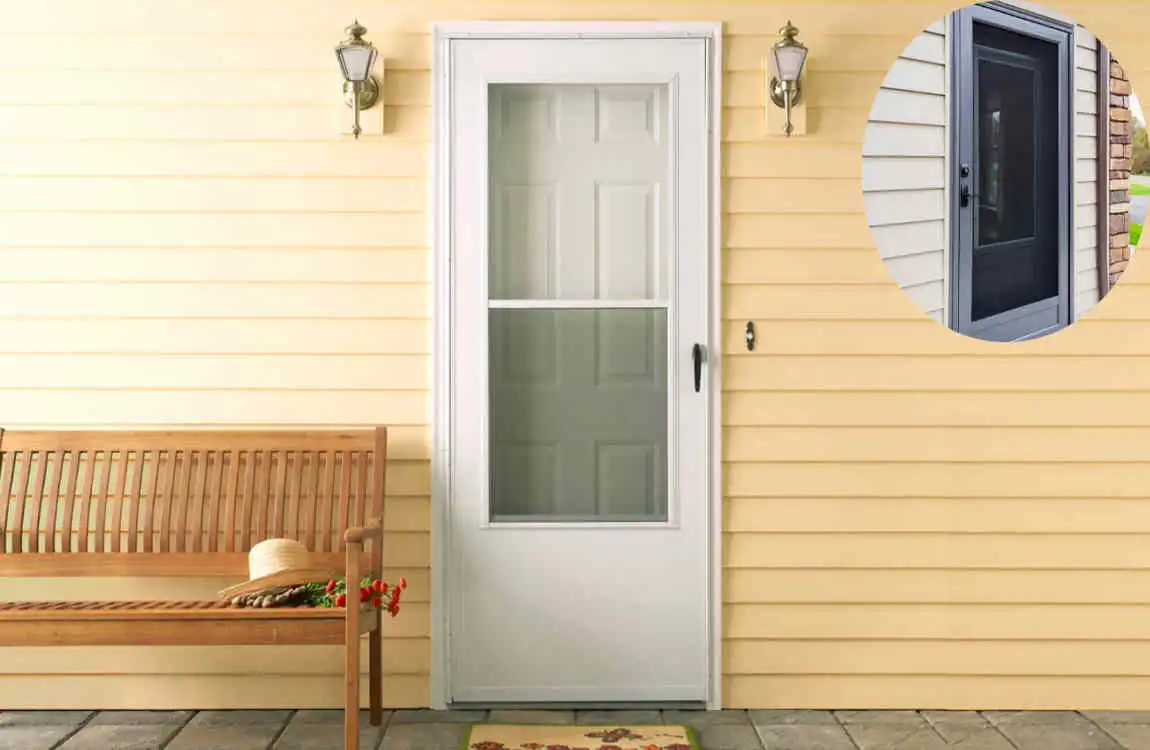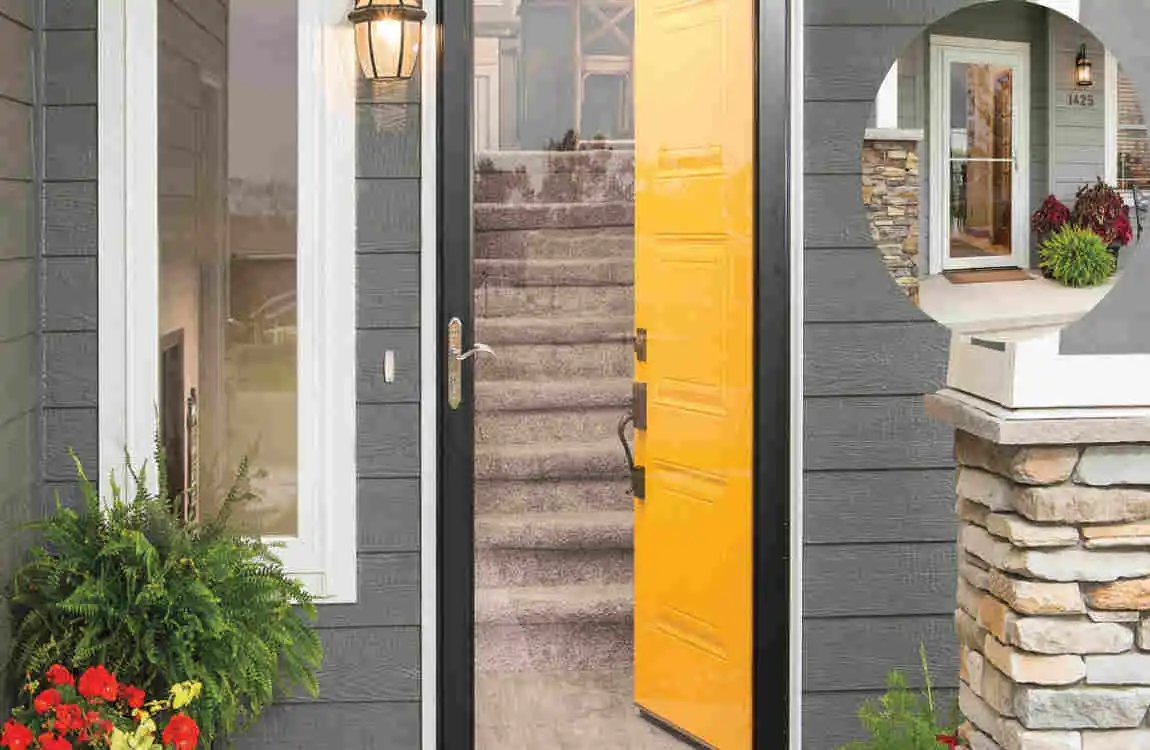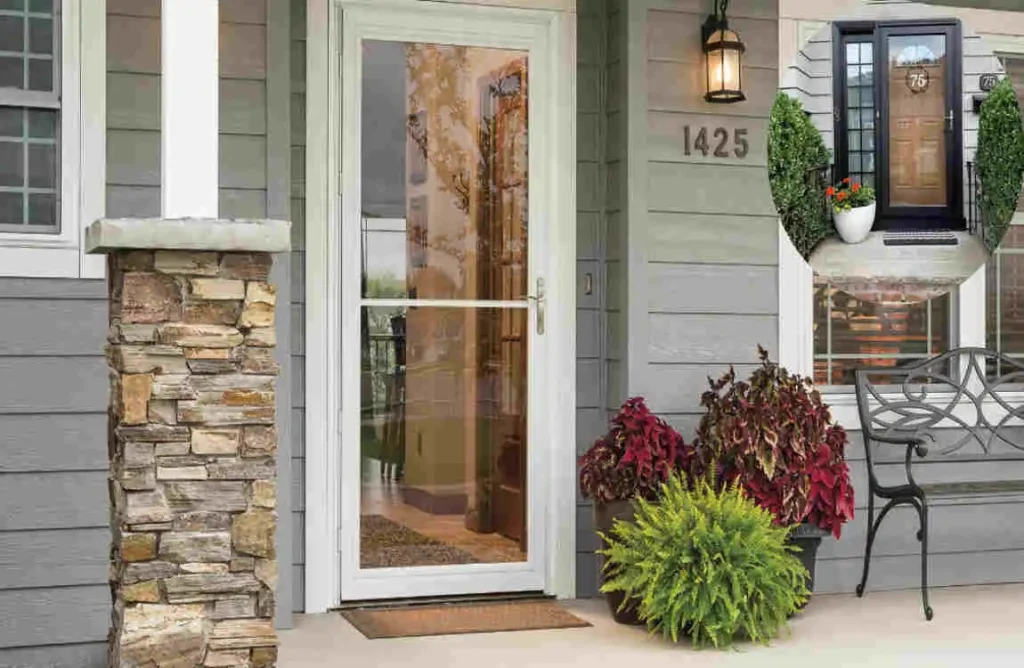Storm doors are often outdated for modern houses because today’s entry doors come with advanced insulation, security, and energy efficiency features that reduce the need for the extra layer storm doors provide. While storm doors can still offer some benefits like added protection and insulation for older doors, modern high-performance house doors often make them unnecessary and sometimes negatively impact curb appeal
What is a Storm Door and Its Purpose?

A storm door is a secondary exterior door installed in front of an entry door. It serves as a protective barrier against harsh weather conditions, including wind, rain, and snow.
One of its primary purposes is to enhance energy efficiency. By creating an additional layer between the interior of your home and the outdoor elements, you can help maintain indoor temperatures year-round. This can result in lower energy bills.
Storm doors also offer ventilation options. Many designs include adjustable screens or glass panels that allow homeowners to enjoy fresh air without compromising security or comfort on breezy days.
The Evolution of Storm Doors: From Necessity to Aesthetic
Storm doors have come a long way from their utilitarian roots. Originally designed to protect the main entry door from harsh weather, these barriers were essential for maintaining indoor temperatures and prolonging door life.
As time progressed, storm doors transformed into more than just functional pieces. They began to incorporate house decor elements that enhanced curb appeal. Today’s models often feature sleek designs, vibrant colors, and intricate glass patterns.
Homeowners now see storm doors as an extension of their personal style rather than mere protective coverings. This shift reflects broader trends in home design where aesthetics matter just as much as functionality.
With advancements in materials such as fiberglass and aluminum, modern storm doors are both lightweight and durable, offering beauty and resilience against the elements. The evolution is not merely about necessity; it’s about creating a welcoming entrance that complements the entire home’s character.
Pros and Cons of Having a Storm Door

Storm doors offer several benefits. They act as an extra barrier against harsh weather, keeping your home insulated and protecting the main door from damage. This can prolong the life of your primary entrance.
However, there are drawbacks to consider. Storm doors can add another layer to installation costs and may require periodic maintenance themselves.
Some homeowners find that they take away from the aesthetic appeal of their entryways, especially if not chosen carefully. Weighing these factors is crucial when deciding whether a storm door fits into your home’s design and functionality plans.
Modern Alternatives for Improved Energy Efficiency
Today, energy efficiency is more important than ever. Homeowners are increasingly seeking solutions that reduce their carbon footprint and save on utility bills.
One popular option is the use of low-emissivity (Low-E) glass. This technology minimizes heat transfer while allowing natural light to enter. It’s a significant upgrade from traditional storm doors.
Another innovative choice is retractable screens. These provide ventilation without sacrificing aesthetics or insulation when not in use. They can transform an entryway into a breezy haven during warm months.
Smart home integration has also made strides in energy efficiency. Programmable thermostats can manage temperatures based on occupancy, working in conjunction with well-sealed door systems for maximum effectiveness.
Insulated fiberglass doors are gaining traction as stylish alternatives to conventional materials. They offer superior thermal performance and come in various designs that suit modern architecture beautifully.
The Role of Storm Doors in Home Security
Your home is protected by storm doors. They act as a barrier against potential intruders, making it more difficult to access the main entry door.
Many modern storm doors feature enhanced locking systems. These locks can deter thieves and offer peace of mind.
Visibility is another important factor. Many storm doors come with tempered glass panels that not only enhance security but also allow light into your foyer while keeping prying eyes at bay.
In neighborhoods where crime rates fluctuate, having a storm door can be a wise investment in safety. It’s an added precaution that contributes to overall home defense without sacrificing style or curb appeal.
Maintenance and Repair for Longevity
Maintaining a storm door is key to ensuring its longevity. Regular inspections can prevent minor issues from becoming major headaches. Check for dents, scratches, or signs of wear that could allow moisture or air leakage.
Cleaning house your storm door is a simple yet essential task. Use mild soap and water to remove grime. Avoid harsh chemicals that may damage the finish.
Lubricate hinges and locks periodically to keep them functioning smoothly. A little grease goes a long way in preventing rust and sticking mechanisms.
If you notice any cracks in the glass or frame, address them promptly with repairs or replacements. Ignoring these problems can lead to further deterioration.
Consider seasonal adjustments as well. In colder months, ensure seals are intact to maintain energy efficiency; during warmer months, adjust screens for ventilation without compromising security.
